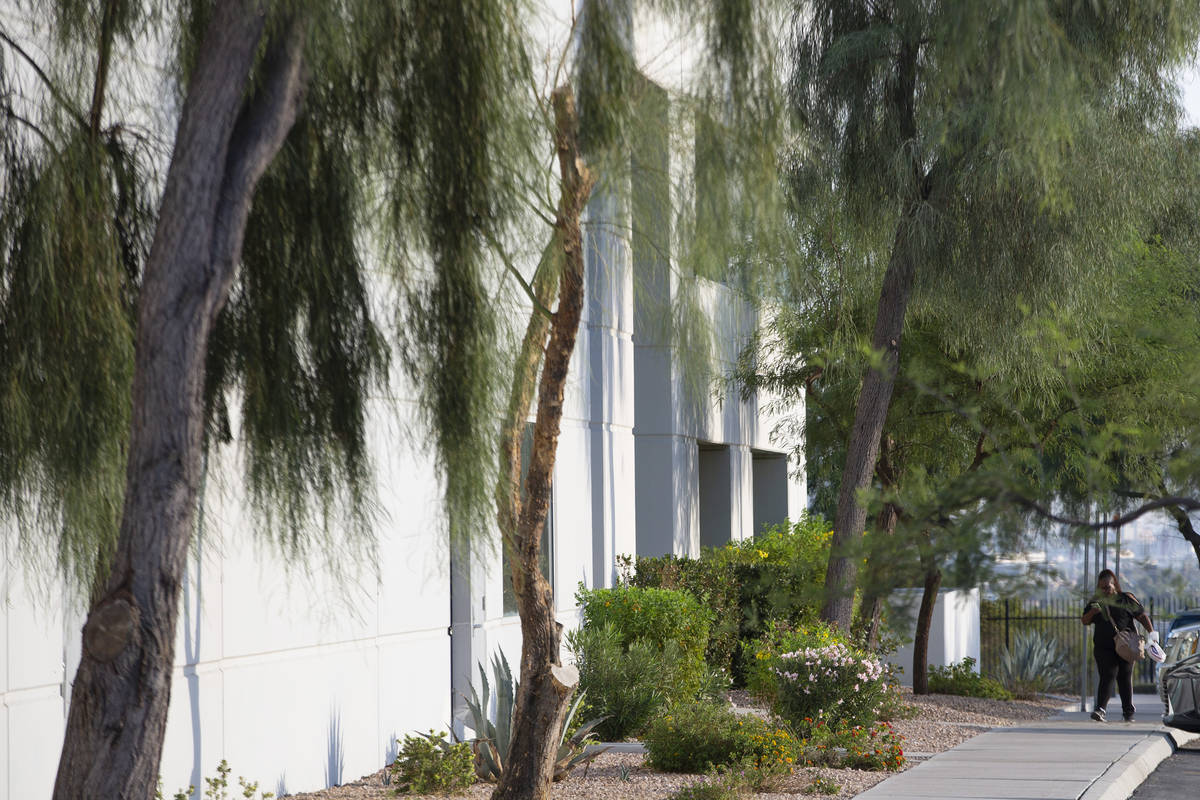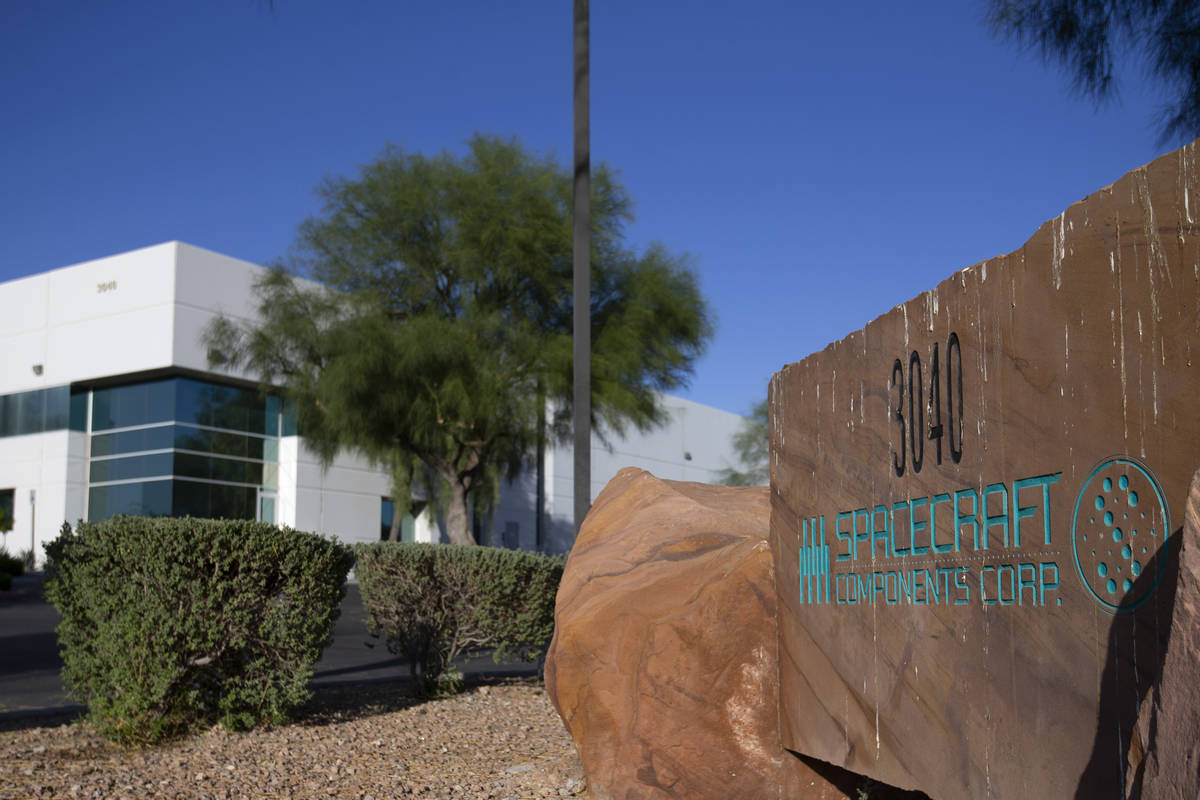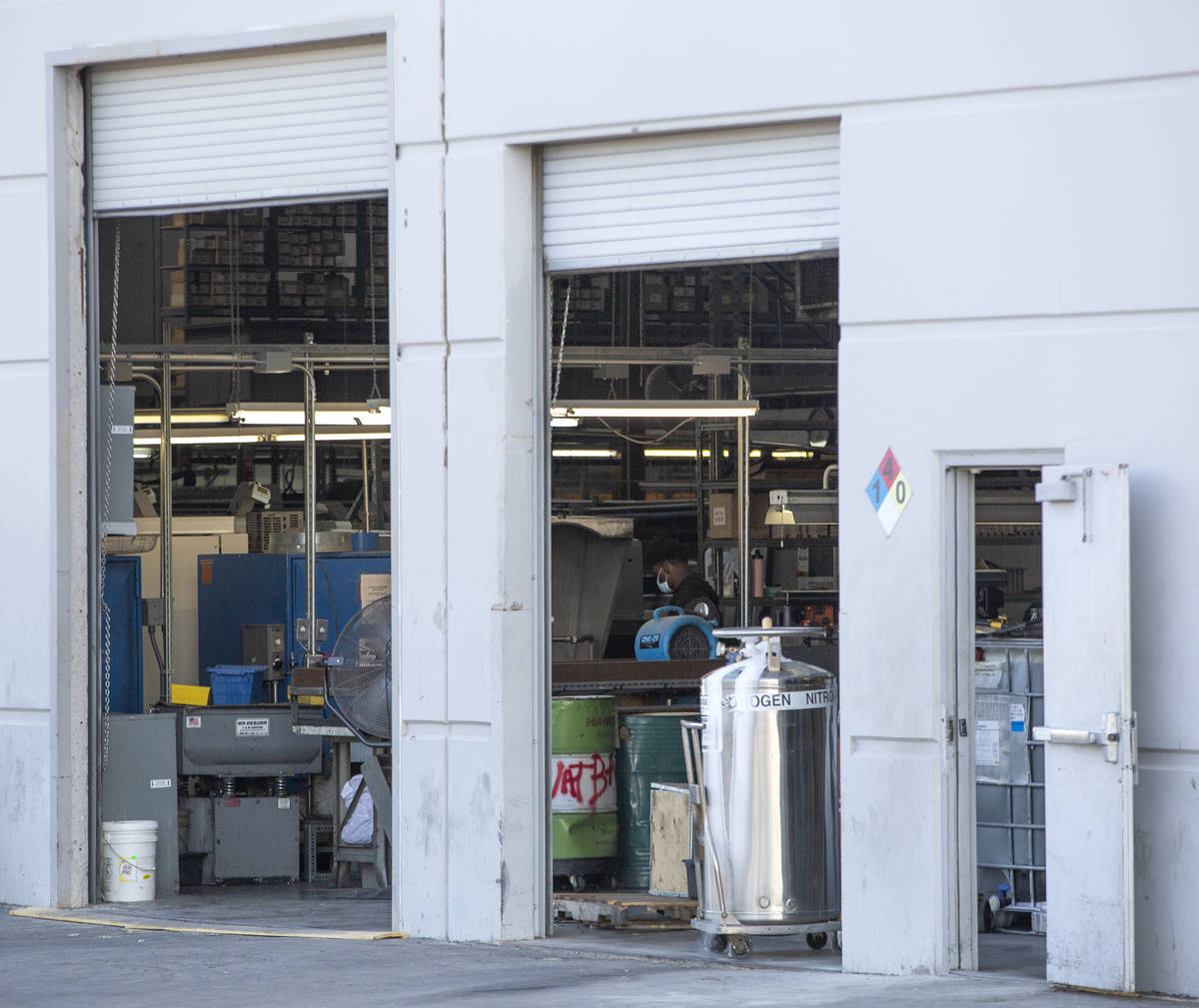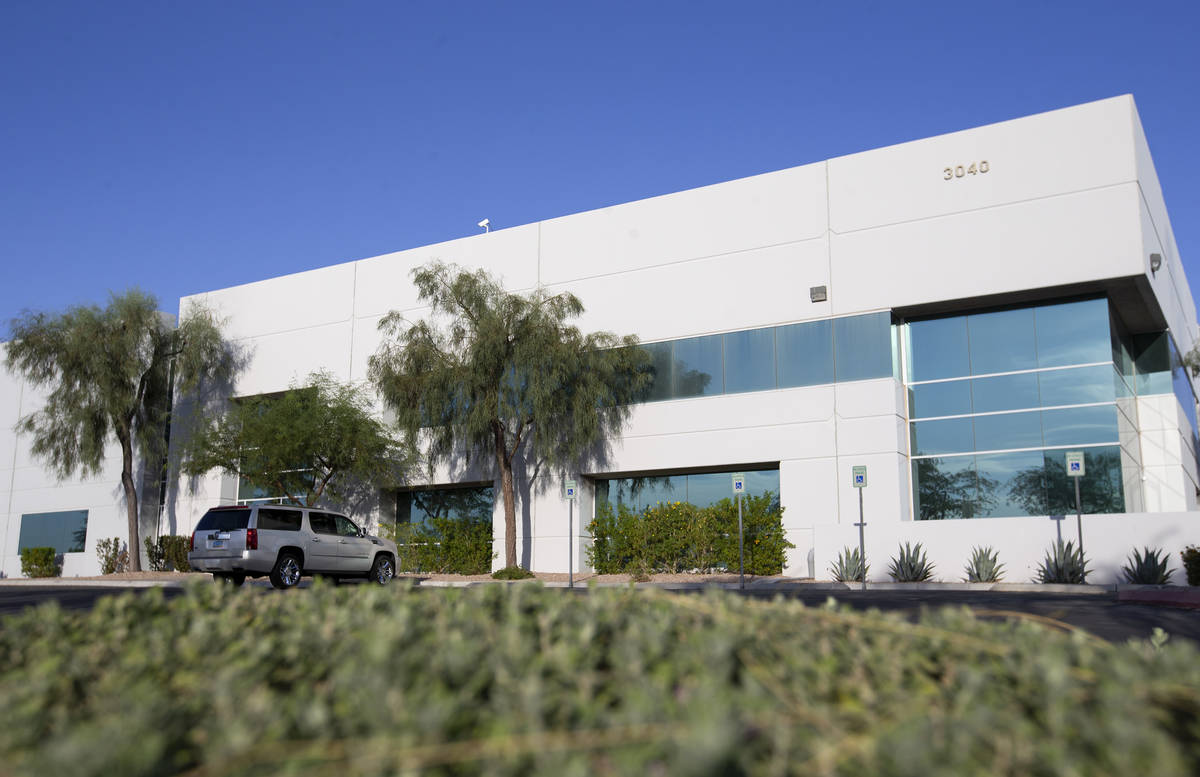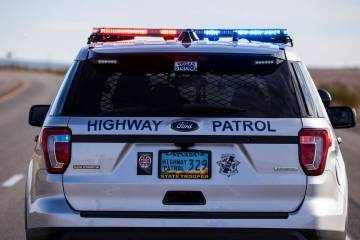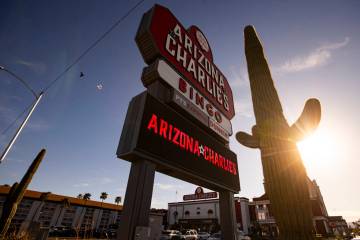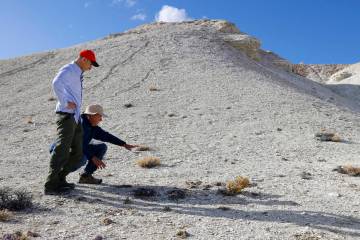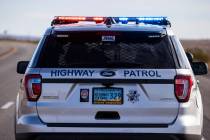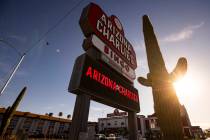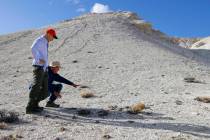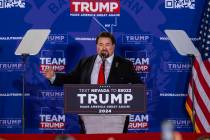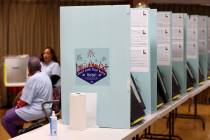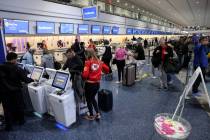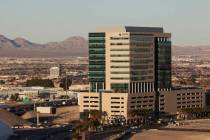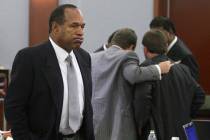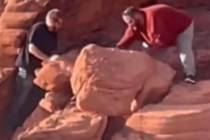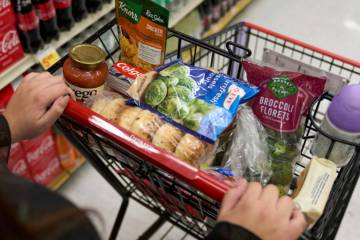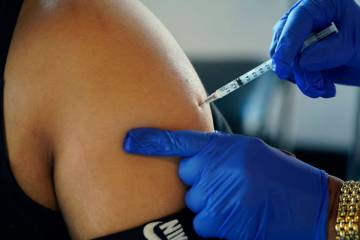Nevada stops COVID exposure reports for workplaces, hotel-casinos
This summer, nearly a third of a local manufacturing company’s workforce caught COVID-19.
Spacecraft Components Corp. voluntarily shut down its North Las Vegas operation for two weeks in June after a handful of its 140 employees reported having the disease. Within weeks, approximately 40 employees tested positive for the coronavirus, the company’s controller said.
But the case cluster did not become public knowledge until the Review-Journal obtained government reports on disease investigation analyses through a records request in mid-September.
The reports revealed the first detailed look at possible disease spread in Clark County, other than at communal living facilities. Listed were businesses most frequently visited by infected people during the time in which they probably caught COVID-19, although the reports did not conclusively identify where transmission occurred.
Now, health officials say they no longer will compile the reports even as new cases are again rising in Nevada, effectively severing the public’s access to the exposure data.
“An analysis of potential exposure sites of case contacts would provide limited if any value while we are experiencing community spread of the virus,” Southern Nevada Health District spokeswoman Jennifer Sizemore wrote in an email.
The Washoe County Health District may also discontinue producing similar reports for its jurisdiction, which showed the area’s Tesla Gigafactory was the workplace with the most COVID-19 cases since June.
“I think we’re questioning whether it’s useful information to be provided to the public,” agency health officer Kevin Dick said Sept. 30.
The decision surprised experts outside Nevada, but both health districts contend that the reports have not contributed to determining where spread is occurring. Instead, health officials say, the reports have pointed to the businesses with the most employees and foot traffic.
The Clark County reports showed Strip hotel-casinos had constituted the largest share of possible exposure locations. Officials and resort industry representatives say rigorous employee COVID-19 testing programs have increased their numbers.
Still, Nevada Press Association Executive Director Richard Karpel criticized the decision, saying it was a step backward in government transparency. Before the reports were released, state health officials had only generally referenced “backyard barbecues” and “family gatherings” as primary causes of new infections.
“It’s not all about mandates, directives and closures,” Karpel said of the state’s COVID-19 response. “It’s about giving people information and allowing them to make decisions on their own.”
The reports also pointed to nonpublic-facing businesses and job sites in Clark County, like Spacecraft Components Corp. and Amazon warehouses.
Many of the ill employees at Spacecraft Components Corp. were family members who shared households, said company controller Holly Wiseman, who noted the company had increased its sanitizing of work stations and space between workers.
But “it seems pretty likely if they had 40 who tested positive that at least some of that was transmitted in the workplace,” said North Carolina State University professor Julie Swann, who served as a science adviser for the Centers for Disease Control and Prevention’s H1N1 pandemic response.
Clark County COVID reports
Nevada Department of Health and Human Services officials began compiling the Clark County reports weekly in August, days after Gov. Steve Sisolak announced a key strategy to curb COVID-19 spread would be “targeting specific businesses that may be experiencing outbreaks” instead of entire industries.
Before the reports were released, however, Sisolak said he was concerned about businesses being harmed by “half information” if the documents were made public.
After state officials compiled their final report, dated Aug. 24, they requested that the Southern Nevada Health District continue the work, Health and Human Services deputy administrator Julia Peek said. Further reports would be submitted to the state’s COVID-19 Mitigation and Management Task Force on a regular basis.
Despite the initial instruction, a Health and Human Services spokeswoman later said the state would not oppose the health district’s decision to discontinue the reports.
“Since they know their communities best, we trust they are reviewing and will analyze the information they feel is most important to protect the health of the public,” spokeswoman Shannon Litz wrote in an email.
Officials have said on multiple occasions the reports would help Nevada’s regulatory agencies focus their virus-related inspection efforts.
But before the document’s public release in mid-September, the Nevada Gaming Control Board nor the state Occupational Safety and Health Administration had not seen the reports, according to officials with the agencies. Nor did the Southern Nevada Health District provide the weekly August reports to Clark County, whose business licensing unit has been enforcing COVID-19 regulations, County Commission Chairwoman Marilyn Kirkpatrick said.
Also, coordination among agencies leading Nevada’s COVID-19 response came under scrutiny this week.
In a letter to Sisolak, Clark and Washoe counties’ health district officers alleged they had been shut out of the state’s discussions about policies and directives. In a response letter, Sisolak’s chief of staff Michelle White pushed back on the claims of exclusion, writing that the governor’s office has “regularly been in touch with and held robust conversation with elected officials in both Clark County and Washoe County — who purport to represent their communities as a whole.”
Workplace exposure
Amazon warehouses were another Clark County business highlighted in the August reports.
The massive online retailer announced this month that almost 20,000 of its U.S. employees have tested positive since March. Nevada had the third-highest rate of cases among the company’s workers, compared with other states, according to a report released by Amazon.
Although an Amazon spokeswoman declined to say how many local employees had become ill with COVID-19, the August reports show two local Amazon warehouses each recorded roughly two dozen possible exposures within a 30-day period.
More than 20 state OSHA complaints related to COVID-19 at local Amazon warehouses have been filed, including allegations that social distancing and sanitizing protocols were not being followed and that sick employees were being allowed or required to work.
“Almost every day a message is sent out about a confirmed COVID-19 case,” alleged a May complaint filed against the warehouse with the largest number of recorded possible exposures noted in the reports.
The company spokeswoman said Amazon had implemented on-site testing and extensive contact tracing that includes the review of video footage to ensure that other employees who had been in close contact with a sick employee were placed on paid quarantine to avoid the spread of the disease.
The reports also captured an outbreak among Allegiant Stadium construction workers in April, with 38 possible exposures reported between March and early August.
Infections among workers were first confirmed to local news media not by the Southern Nevada Health District, but by the joint venture leading the stadium’s construction.
In a recent interview, district chief health officer Dr. Fermin Leguen said his agency identified the case cluster soon after it began, investigated it and conducted on-site testing.
When asked for more examples of local clusters, agency spokeswoman Sizemore wrote the health district “has not identified large clusters/outbreaks with locations or events” and “does not provide specific case information by location.”
What did regulatory agencies know?
Nevada OSHA, responsible for enforcing workplace safety guidelines, began using the reports after the Review-Journal published them to help the agency prioritize where it conducts inspections, agency spokeswoman Teri Williams wrote in an email.
The Nevada Gaming Control Board, which has issued complaints against hotel-casinos for not following COVID-19 guidelines, “does not receive or track COVID information at casinos,” spokesman Michael Lawton wrote in an email on Sept. 18. Lawton did not respond to a request for comment this week.
Nevada COVID-19 response director Caleb Cage said on Sept. 25 that the reports had been shared with “state agencies across the board” to help focus regulatory efforts. But on Friday he said he did not know whether they were given to the agencies before or after their public release.
The Southern Nevada Health District has used the reports to help guide its health inspection program, Leguen said. He added that the reports had been shared with Clark County’s Multi-Agency Coordination Center, but county commission chairwoman Marilyn Kirkpatrick said the MACC had not received any of the reports published in August.
The county’s business licensing department isn’t relying on the reports to focus its enforcement of COVID-19 safety regulations, Kirkpatrick said. However, the department has conducted more than 11,000 compliance checks at businesses, including Strip hotel-casinos. “There is additional scrutiny with all businesses right now,” she said.
Deluge of virus information
UNLV epidemiologist Brian Labus, who serves on Sisolak’s medical advisory board for COVID-19, said he believes local health officials are exploring and addressing potential case clusters as soon as they become aware of them — whether they publicize their findings or not.
Facing a deluge of new information daily, health districts could decide regularly running reports on potential exposure locations is a waste of resources, Labus and Swann said.
“It doesn’t mean that they’re not looking at the data,” Labus said. “They’re just not looking at it in a way that it lends itself to a report like that.”
Leguen described the reports’ findings as raising “more questions than answers” for the health district. Some experts, however, questioned whether the reports were used to their full potential.
“I agree the data has more questions than answers, which tells me more questions need to be asked,” said Oscar Alleyne, an epidemiologist and a senior adviser with the National Association of County and City Health Officials.
Alleyne said Clark County’s possible exposure location data would be better if it delineated between employees and customers. There could also be patterns within the data, such as if multiple infected people visited the same restaurant or bar inside a hotel-casino.
Swann said she agreed the possible exposure data lacked context, but she was surprised to see health departments dismiss the reports.
“At the very least, I would use it to go back to a location or a business that seems like it’s performing worse than others of similar sizes on a consistent basis, and have the conversation about what they’re going to change,” she said.
Contact Michael Scott Davidson at sdavidson@reviewjournal.com or 702-477-3861. Follow @davidsonlvrj on Twitter. Contact Mary Hynes at mhynes @reviewjournal.com or 702-383-0336. Follow @MaryHynes1 on Twitter.



